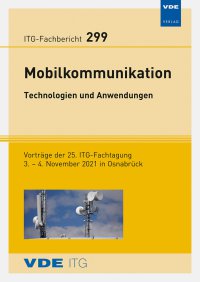Enabling Broadcast-like Services in Cellular Networks: System Design and Field Trials
Conference: Mobilkommunikation - 25. ITG-Fachtagung
11/03/2021 - 11/04/2021 at Osnabrück
Proceedings: ITG-Fb. 299: Mobilkommunikation – Technologien und Anwendungen
Pages: 6Language: englishTyp: PDF
Authors:
Richter, Lucca; Hoyer, Mark; von Beöczy, Jonas; Reimers, Ulrich (Institut für Nachrichtentechnik (IfN), Technische Universität Braunschweig, Braunschweig, Germany)
Abstract:
The worldwide mobile data consumption is still increasing exponentially. Mobile video accounts for the largest share of data transmitted via mobile networks. To cope with this market development, the broadcast of popular live video is a promising option. Since 2017, the 3rd Generation Partnership Project (3GPP) offers a Long Term Evolution (LTE)-based dedicated broadcast mode for mobile coverage called Further evolved Multimedia Broadcast Multicast Service. This mode continues to be developed to this day since field trials have shown deficits. 3GPP-proposed enhancements for synchronization and signaling still have to prove their benefits. Although 3GPP has already defined the LTE successor 5G New Radio (NR), no dedicated broadcast mode has yet been standardized. A future 5G NR-based broadcast has the chance to overcome design weaknesses of its predecessor and has the potential to become the established broadcast mode of the future. Furthermore, the Digital Video Broadcasting (DVB) Project standard DVB-I (Internet) could provide a service layer on top of 3GPP broadcast modes to solve interoperability issues for various devices. Latest investigations identify common use cases for the cooperation of DVB-I and 5G (broadcast).


